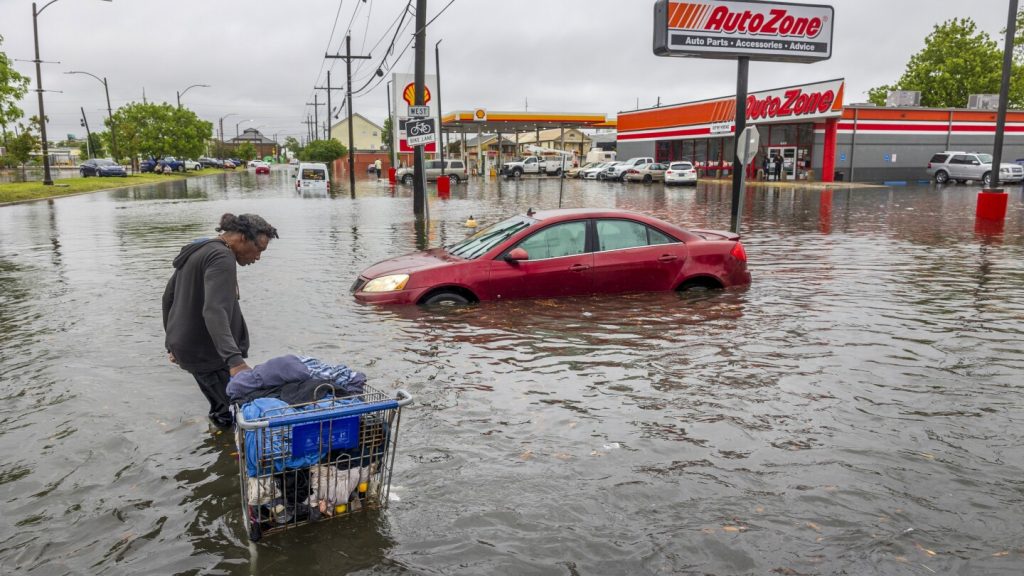Severe storms swept through the U.S. Southeast on Thursday, causing tornado warnings, flash floods, and power outages. One person has already died in Mississippi, and the storm system caused widespread destruction in the New Orleans area. More than 100,000 customers were without power, with Georgia being the hardest hit. Forecasters are now raising concerns for parts of Ohio, Kentucky, and West Virginia, warning of possible tornadoes, damaging winds, and hail.
In West Virginia, at least a dozen counties closed public schools early due to the approaching storms. The region had already been hit by nine tornadoes on April 2, setting a record for the state. In Augusta, Georgia, the start of the Masters golf tournament was delayed due to forecasted high winds. Emergency responders in various locations across Georgia and Florida were dealing with impassable roads, fallen trees, and significant flooding. In St. Augustine, Florida, damage assessments were underway following a possible tornado touchdown.
The storm damage extended from Texas to the Florida Panhandle, with a tornado striking Slidell, Louisiana. The tornado caused widespread damage, ripping roofs off buildings and trapping people in one apartment complex. Hundreds of homes were reportedly damaged, both in and outside the city. Rainfall of up to 8 inches flooded parts of New Orleans, straining the city’s drainage system. Tragically, a woman in central Mississippi died after a power outage shut down her oxygen machine. In Texas, multiple rescues were conducted in flooded areas, with damage reported in the Houston suburb of Katy.
Despite the widespread destruction, there were no reported deaths or critical injuries in Slidell. Initial assessments indicated an EF-1 tornado with wind speeds of up to 110 mph hit the area. The New Orleans Sewerage and Water Board worked to manage water drainage amid power outages. Across the affected areas, residents and officials expressed gratitude that there were no fatalities. In St. Augustine, Florida, the community braced for possible additional tornadoes as emergency responders assessed the extent of the damage.
Overall, the severe storms that swept through the U.S. Southeast caused significant damage and disruption. From power outages to tornadoes and flooding, numerous states were impacted by the extreme weather. As residents begin to recover and repair the damage, emergency services and weather forecasters continue to monitor the situation. The storms serve as a reminder of the power and unpredictability of nature, highlighting the importance of preparedness and response measures in the face of such events.




